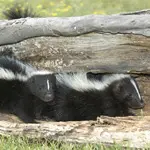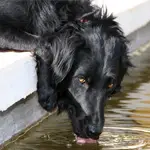Companion Animals as Sentinels for Emerging Diseases

You have asked…Companion animals may serve as sentinels for emerging infectious diseases in humans, so which diseases should I be aware of as a clinical veterinarian?
The expert says…
Today, nearly 75% of emerging diseases are zoonotic,1 so companion animals may best serve as sentinels for these diseases. Companion animals in developed countries often live, eat, and sleep in close proximity to humans and are therefore exposed to the same infectious agents and perhaps the same foods. This means zoonotic diseases in pets can serve as early warnings to help map the epidemiology of an infectious disease and reduce animal and human morbidity and mortality.2,3
Zoonotic diseases in pets can serve as early warnings to help map the epidemiology of an infectious disease and reduce animal and human morbidity and mortality.2,3
This health benefit only occurs, however, if disease detection and reporting are accomplished quickly and immediate action is taken to contain and prevent further disease transmission. Unfortunately, veterinarians face state-to-state variations in disease-reporting requirements, and most requirements focus overwhelmingly on foreign animal and high-consequence diseases affecting food animals.4
Related Article: Zoonoses of Small Mammals
The diseases for which companion animals could serve as sentinels may vary, depending on geographic location. However, today’s rapid global travel is diminishing the issue of locality; infectious agents move just as rapidly as any means of conveyance, as was demonstrated by the 2003 monkeypox outbreak in the U.S.5
A few of the emerging diseases encountered by companion animal practitioners are covered here.
Influenza
The influenza pandemics of the past 100 years have all emerged from animals.6 Dogs, cats, and ferrets have demonstrated antibodies to several strains of influenza virus A, but only a few viruses have caused clinical illness: H5N1 and the H1N1 strains in dogs and cats, and H3N2 and H3N8 in dogs.7,8 Ferrets are susceptible to several type A viruses, including seasonal H1N1, H5N1, 2009 H1N1, and some type B viruses.9,10 Influenza should be considered in dogs and cats with lower respiratory disease (particularly pneumonia), fever, and conjunctivitis6 and in those with a history of being in a household with persons who have influenza or influenza-like illness. Additional clinical signs in cats with influenza may include inappetence, listlessness, dehydration, fever, and dyspnea.8 Ferrets may exhibit upper respiratory signs, anorexia, fever, sneezing, nasal discharge, conjunctivitis, and lethargy.9 New strains of influenza emerge yearly, and the risks for pets becoming infected could easily change with future viral mutations.
Related Article: Opossums, Cats, Fleas, & Zoonotic Disease
Rabies
Rabies surveillance is the only example of a complete, functional, nationwide reportable disease program using companion animals as sentinels. While not new to the U.S., the rabies virus continues to spread into areas that previously had little or no rabies and emerge in new host species (eg, the 2001 emergence of the bat strain of rabies in skunks in Flagstaff, Arizona).11

Rabies may occur in any exposed mammal, typically through a bite from an infected animal. The usual incubation period is 3 to 8 weeks in dogs12 and 4 to 6 weeks in cats.13 The first signs of rabies are usually behavioral changes. The next phase is often an aggressive state in which the animal may have an exaggerated response to auditory or visual stimuli.12 The animal may try to eat inanimate materials or have excessive salivation, and its vocalizations may change in tone and character. The dog or cat may attack without warning. Seizures may occur. Paralysis may ensue, followed by coma, respiratory failure, and then death. Sometimes only the paralytic form of disease without the increased aggressiveness is evident before death.12
Related Article: Assessing Client Risk for Zoonotic Disease - Questions to Ask
Leptospirosis
Many regard leptospirosis as the world’s leading zoonotic disease. It occurs virtually worldwide, has been reported in more than 150 mammalian species,14 including humans, and is easily transmitted via contaminated water, soil, or direct contact with an infected animal’s urine or reproductive fluids. One study showed an increase in the percentage of dogs that tested positive for Leptospira spp infection in the U.S. during a 3-year period. L autumnalis, a serovar that is not included in the canine vaccine, was shown to be predominant in half of all U.S. states.15 Infection in dogs may be subclinical, result in mild signs, or cause severe illness or death. Signs may include vomiting, dehydration, hematemesis, petechiae, icterus, vascular collapse, fever, anorexia, oliguria, and anuria.16 Leptospira spp infection in cats is rare; antibody prevalence ranging from 0% to 35%.14 While clinical signs are rare in cats, they can include interstitial nephritis, renal failure, ascites, and hepatomegaly.14

Bartonella spp Infection

Bartonella spp infection continues to be an emerging disease in domestic and wild animals; several Bartonella spp are considered pathogenic in humans. The number of newly discovered Bartonella spp and accompanying subsp for each, the diversity of reservoir hosts, and the number and types of arthropod vectors continue to expand.17 Cats, dogs, horses, cows, dolphins, whales, pigs, and humans can become infected with B henselae, the main cause of cat-scratch disease in humans and the most common Bartonella species in cats.17 Cats are the natural reservoir of B henselae, and the main vector is the flea. Most cats remain subclinically infected with B henselae, but clinical signs of natural infection may include endocarditis, myocarditis, gingivitis, seizures, uveitis, and immune complex disease.10 More significant disease can develop when the cat is infected with other Bartonella spp.18 Dogs have been found to be infected with several Bartonella spp but are often infected with B vinsonii subsp berkhoffii. The most common presentation in dogs involves endocarditis, but other sequelae have been reported. Of 13 Bartonella spp or accompanying subsp thought to be pathogenic for humans, 4 have been isolated in cats.19
From a One Health perspective, if veterinarians suspect a zoonotic disease in a patient, they should explain and document the potential risk for the client and offer to communicate with the client’s health care provider.
Conclusion
In addition to the emerging diseases listed here, a companion animal practitioner might see Brucella canis, Leishmania spp, Rickettsia rickettsii, Rickettsia felis, and Yersinia pestis infections, among others. Many emerging diseases are under-reported and underdiagnosed, and zoonoses that have been responsible for ongoing epidemics (eg, West Nile virus, Lyme disease) are absent from the list of reportable animal diseases in some states.2 The usefulness of animals as sentinels for disease is only as good as the reporting mechanisms in place and the veterinary knowledge and awareness of these emerging diseases.
From a One Health perspective, if veterinarians suspect a zoonotic disease in a patient, they should explain and document the potential risk for the client and offer to communicate with the client’s health care provider. State public health veterinarians also should be informed about unusual disease occurrences so they can help mitigate the spread of disease.
This article is part of the WSAVA Global Edition of Clinician's Brief and the One Health Initiative.
Radford Davis, DVM, MPH, DACVPM, is associate professor at Iowa State University, where he teaches public health within the veterinary curriculum. His current area of interest is improving One Health in impoverished countries by training community animal healthcare workers, building animal health and public health programs, and training One Health practitioners to deliver basic animal and human healthcare in remote areas of Africa.